I'm using Tensorflow.js to train and predict foods, the Web API to access my notebook webcam and Vue.js to create a simple page.
I have an infinite loop inside the addExample() method, the while(true), which is responsible for asking the model to predict what is in front of my webcam every frame and re-render the result.
I'd like to know if there is a problem in having an infinite loop inside a method in my Vue instance.
async addExample() {
const selector = document.getElementById('classSelector');
const player = document.getElementById('player');
// Get the intermediate activation of MobileNet 'conv_preds' and pass that
// to the KNN classifier.
const activation = this.net.infer(player, 'conv_preds');
// Pass the intermediate activation to the classifier
this.classifier.addExample(activation, selector.selectedIndex);
console.log("Class '" + selector.value + "' added to the model");
while (true) {
if (this.classifier.getNumClasses() > 0) {
const activation = this.net.infer(player, 'conv_preds');
const result = await this.classifier.predictClass(activation);
this.confidence = result.confidences[result.classIndex];
this.label = this.foodClasses[result.classIndex].name;
}
await tf.nextFrame();
}
}
This method is triggered when I click the training button, but inside the method it stays in infinite loop. But everytime I need to train the same object or a new one, I have to trigger the method again, which results in entering again in the same loop - but I think the old one keeps running.
<button type="button" @click="addExample()">Train class</button>
In case you want to see the code in action, here is a fiddle
Edited: Thank you for the answers. I was able to solve my problem in the way I was expecting. Now, when I trigger the addExample() function, I have only one loop running, instead of having the old ones. I'm saying this based on a very shallow analysis of my GPU utilization percentage in the Task Manager.
In the old way, when I triggered addExample() more than one time, I could see the GPU percentage utilization raising more and more.
Now, the percentage utilization increases only one time.
This is the final code:
async addExample() {
const selector = document.getElementById('classSelector');
const player = document.getElementById('player');
this.infiniteLoopControler += 1;
const internalLoopControler = this.infiniteLoopControler;
// Get the intermediate activation of MobileNet 'conv_preds' and pass that
// to the KNN classifier.
const activation = this.net.infer(player, 'conv_preds');
// Pass the intermediate activation to the classifier
this.classifier.addExample(activation, selector.selectedIndex);
console.log("Class '" + selector.value + "' added to the model");
while (internalLoopControler === this.infiniteLoopControler) {
if (this.classifier.getNumClasses() > 0) {
const activation = this.net.infer(player, 'conv_preds');
const result = await this.classifier.predictClass(activation);
this.confidence = result.confidences[result.classIndex];
this.label = this.foodClasses[result.classIndex].name;
}
await tf.nextFrame();
}
}
Thank you again for helping me!

